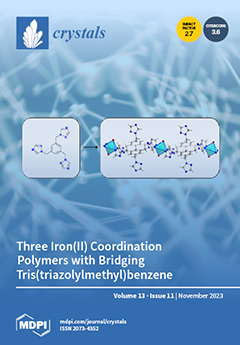Currently, Zambia is the second largest source of emeralds, after Colombia. In this study, emerald samples from the Zambian Kamakanga deposit were examined by UV-Vis-NIR, Miro-FTIR, Diamond View
TM, and LA-ICP-MS. Representative UV-Vis-NIR spectra showed a distinct Fe
3+ absorption peak, and
[...] Read more.
Currently, Zambia is the second largest source of emeralds, after Colombia. In this study, emerald samples from the Zambian Kamakanga deposit were examined by UV-Vis-NIR, Miro-FTIR, Diamond View
TM, and LA-ICP-MS. Representative UV-Vis-NIR spectra showed a distinct Fe
3+ absorption peak, and the Fe-related absorption band was much stronger than that of the Cr-related absorption band. The infrared spectra showed that the absorption of type II H
2O was much stronger than that of type I H
2O. The results of LA-ICP-MS indicated that darker green, green, lighter green, and bluish-green emeralds had a clear separation of Cr/V (Cr/V > 15 for darker green, 10 < Cr/V < 15 for green, and Cr/V < 10 for lighter green and bluish green). In color zoning emerald, the contents of Cr, Sc, V, and Fe gradually increased with the intensity of the green color, while the opposite occurred for Cs. Cr is the main chromogenic element in Kamakanga emeralds. Additionally, Zambian Kamakanga emeralds contain high contents of total alkali metals (avg. 17,592 ppmw), Cs (avg. 1331 ppmw), Fe (avg. 8556 ppmw), Li (avg. 485 ppmw), Li + Cs (avg. 1816 ppmw), and Ga/Fe < 0.0025. Therefore, combined Fe versus Ga, Li versus Cs binary diagrams and K, Rb, and the Li + Cs ternary plot can distinguish Zambian emeralds from other important emerald origins.
Full article





